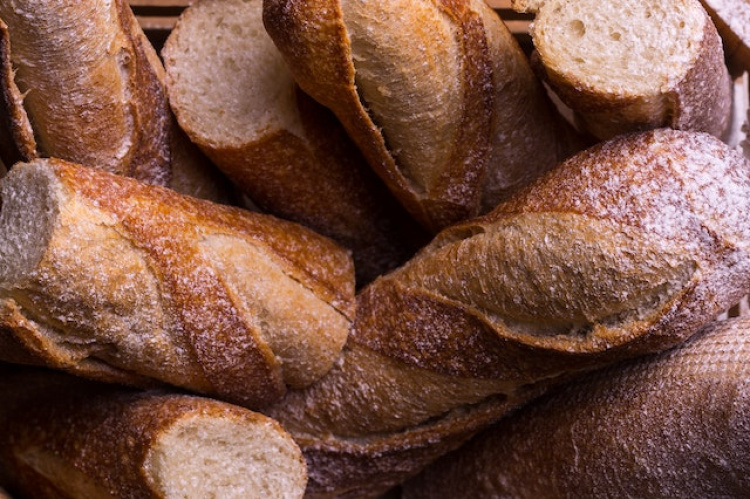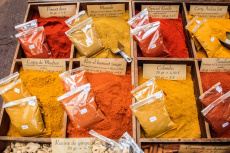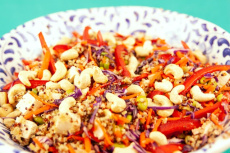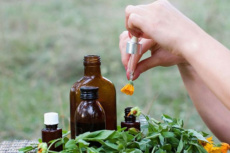What are the different types of yeast? (Dictionary for novice bakers)
We have been eating bread since the beginning of our civilization, but many still do not know the properties and differences of the different types of leavening agents or yeasts.
What is baker's yeast?
Baker's yeast is a microorganism used in the production of bread and other baked goods to make dough rise and have a fluffy texture. It is composed of a single-celled fungus known as Saccharomyces cerevisiae, which feeds on sugars present in the dough and produces carbon dioxide and alcohol as by-products.
When yeast is added to the dough dough, it metabolizes the sugars present in the ingredients, releasing carbon dioxide in the form of bubbles. These bubbles get trapped in the dough, causing it to rise in volume and have a light, fluffy texture when baked.
There are different forms of baker's yeast available on the market. Fresh yeast, also known as active fresh yeast or fresh baker's yeast, comes in the form of blocks or soft cubes. Dry yeast, on the other hand, comes in the form of granules or powder and has a longer shelf life than fresh yeast.
Baker's yeast is an essential ingredient in the preparation of bread and other baked goods, as it drives the fermentation process that allows the dough to rise and develop its characteristic flavor and texture.
What is sourdough?
Mother yeast, also known as mother dough or natural ferment, is a natural yeast culture used in the production of bread. Unlike commercial or instant yeast, which is an isolated strain of yeast, mother yeast is a mixture of wild yeasts and bacteria naturally present in the environment.
Mother yeast is created by mixing flour and water and allowing it to ferment for a period of time, usually several days or even weeks. During fermentation, yeasts and bacteria present in the environment and in the ingredients develop and feed on the sugars in the flour, producing lactic acid and carbon dioxide.
The use of mother yeast in the baking provides several benefits. Firstly, the yeasts and bacteria present in the sourdough contribute to a slower and longer fermentation process, which helps to develop the flavor and texture of the bread. They are the appreciated "slow breads". In addition, mother yeast can help improve the digestibility and conservation of bread, as well as provide a greater variety of flavors and aromas.
Mother yeast is used as a base to make bread instead of using yeast commercial. A portion of the sourdough is reserved after each fermentation and fed with more flour and water to keep it alive and active. This portion of mother yeast is then used to ferment the new bread dough, and the process is repeated continuously, allowing the mother yeast to be kept alive and enriched over time.
Mother yeast requires care and Regular maintenance to maintain its activity and properties. It is a fundamental element in artisanal baking and has gained popularity due to the unique flavors and characteristics it can impart to bread.
In practice, what is the difference between baker's yeast and sourdough?
Baker's yeast is faster and more direct in its fermentative action. It activates quickly when mixed with the dough ingredients and produces a rapid fermentation, allowing the dough to rise quickly.
Mother yeast, on the other hand, requires a slower and longer fermentation process. . Due to the presence of wild yeasts and bacteria, fermentation can take several hours or even days. This allows a more complete development of flavors and aromas in the bread and contributes to its texture and preservation.
Regarding the flavor and characteristics of the bread, baker's yeast, being faster, tends to to produce a bread with a more neutral flavor and aroma. On the other hand, mother yeast provides a greater complexity of flavors and aromas to the bread. Due to prolonged fermentation and the presence of wild yeasts and bacteria, mother yeast can impart sour, fruity or even slightly alcoholic notes to bread.
What is micronized yeast?
Micronized yeast is a type of yeast that has been processed and ground into very fine particles, smaller than conventional dry yeast. This micronization process helps improve the dissolution and dispersion of yeast in liquids and mixes, making it easier to incorporate into food and beverage products.
Micronized yeast is produced using specialized milling techniques that reduce the size of yeast particles to a microscopic size. This significantly increases the contact surface of the to yeast, which improves its ability to dissolve and mix evenly into the dough or liquid in which it is used.
Micronized yeast is used in a variety of food and beverage products, including bread, cakes, biscuits, sauces, dressings, fermented beverages, and dietary supplements.
Micronized yeast must be properly activated before use. Therefore, it is usually mixed with warm liquids or added directly to the dough or liquid it will be used in to activate it before fermentation.
What is chemical leavening?
Chemical leavening, also known as baking powder or chemical booster, is a leavening agent used in baking and confectionery to make doughs rise and fluffy without using biological yeast.
Unlike baker's yeast, which is a living organism (active yeast), chemical yeast is a combination of powdered chemical ingredients, usually sodium bicarbonate (sodium hydrogen carbonate) and a reaction acid, such as cream of tartar (potassium bitartrate), calcium hydrogen phosphate, or monocalcium phosphate.
When the Chemical yeast is mixed with the dough and exposed to the heat of the oven, the chemical ingredients react with each other and release carbon dioxide. This gas is trapped in the dough in the form of bubbles, causing the dough to expand and acquire a light and fluffy texture.
It is important to note that the action of chemical leavening is instantaneous and is activated when mixed with liquid and exposed to heat. It does not require fermentation time like biological yeast does. This makes chemical yeast especially useful in recipes that do not allow time for fermentation, such as some cakes, cookies, and quick breads.
What is "yeast water"?
The "yeast water" is a liquid obtained from the process of activation or hydration of dry or fresh yeast before its use in baking or confectionery. It is also known as "activation water" or "rehydration water".
When using dry yeast, it is common to dissolve it in warm or specific temperature water to reactivate it before adding it to the dough. This process allows the yeast to dissolve and activate, preparing it for fermentation. The liquid resulting from this solution is known as "yeast water". The warm water used to dissolve the yeast provides an optimal environment to activate the yeast cells and promote their growth.
The amount of water used to activate the yeast may vary depending on the recipe and yeast manufacturer's instructions. yeast. It is important to follow specific recommendations to ensure that the yeast activates correctly and provides proper fermentation.
The yeast water, once prepared, is mixed with the other ingredients in the recipe to form the dough . Carbon dioxide produced during yeast fermentation will disperse into the dough and cause it to rise, creating a spongy, airy texture in the final product.
What is rejuvelac or enzyme water?
Rejuvelac is a fermented drink made from sprouted grains, usually wheat, barley, rye, or quinoa. It is known for its probiotic properties and is used as a fermented food that promotes intestinal health.
The rejuvelac preparation process involves soaking the grains for a period of time, typically 24-48 hours, to allow them to germinate. After sprouting, the beans are rinsed and left in water for a few additional days to allow for fermentation.
During fermentation, the beans release enzymes and beneficial bacteria that convert carbohydrates into lactic acid, vitamins and other bioactive compounds. The resulting liquid is rejuvelac, which takes on a slightly acidic, effervescent flavor.
Rejuvelac can be consumed directly as a refreshing drink or used as a base for other preparations, such as salad dressings or sauces. It is important to note that the flavor of rejuvelac can vary depending on the type of grain used and the fermentation time.
Rejuvelac is valued for its probiotic content, which can help balance intestinal flora and promote healthy digestion.
Rejuvelac is a homemade fermented drink and its preparation requires care and attention to avoid contamination by undesirable bacteria. Its consumption is not recommended by pregnant women or people with compromised immune system diseases.
Can rejuvelac be prepared with dates?
Rejuvelac is traditionally prepared using sprouted grains. However, it is also possible to prepare a variant of rejuvelac using dates instead of grains.
Preparing rejuvelac with dates involves soaking and rinsing the dates to remove any dirt or impurities. The dates are then added to a clean glass jar and covered with filtered water. The jar is covered with a breathable cloth or cheesecloth and allowed to stand at room temperature for a day or two, shaking gently from time to time.
During this fermentation period, the dates release sugars natural substances that are consumed by bacteria and yeasts present in the environment. This produces lactic acid and other compounds that give rise to rejuvelac's flavor and fermented properties.
After a day or two of fermentation, the liquid from the dates is strained and any remaining dates are discarded. The resulting liquid is date rejuvelac and can be consumed directly or used as a base for dressings, sauces, or smoothies.
Fermentation with dates can produce a sweet and sour taste in rejuvelac, rather than the flavor more neutral than is obtained with sprouted grains. Also, due to the high sugar content of dates, date rejuvelac can be sweeter than the traditional version.
If you decide to make rejuvelac with dates, be sure to use good quality dates and filtered water. It is also important to follow proper hygienic practices to avoid contamination and ensure fermentation safety.









